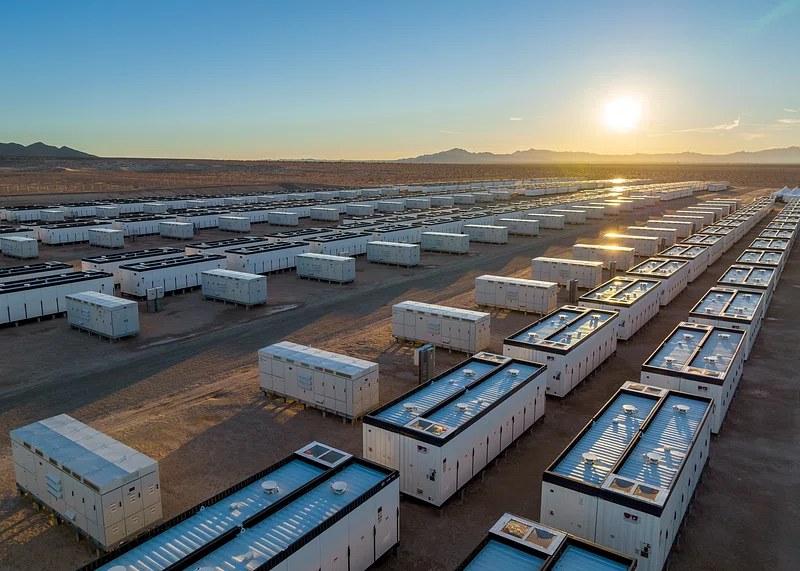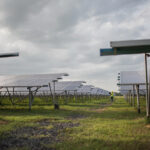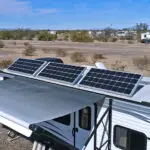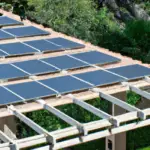As the world continues to grapple with the challenges of climate change and energy sustainability, innovative solutions are emerging that can help reduce our carbon footprint and promote renewable energy sources. One such solution is the use of solar panels on shipping containers. This concept has gained significant attention in recent years due to its potential to provide clean energy while also addressing issues related to space constraints and environmental impact. In this blog post, we will explore the benefits and feasibility of using solar panels on shipping containers, and why it’s an idea worth considering for your next project.
Benefits of Solar Panels on Shipping Containers
Renewable Energy Source
The primary benefit of using solar panels on shipping containers is that they provide a reliable source of renewable energy. Solar power is a clean and sustainable way to generate electricity, which means that it doesn’t produce any harmful emissions or pollutants that contribute to climate change. By harnessing the power of the sun, you can significantly reduce your reliance on traditional fossil fuels and lower your carbon footprint.
Space-Efficient Design
Shipping containers are designed to be compact and efficient, making them ideal for transporting goods across long distances. The same principles apply when converting them into solar power generators. Solar panels can be easily integrated onto the roof of a shipping container, providing a substantial amount of energy without taking up valuable land space. This makes it an excellent option for businesses or individuals who need a reliable energy source but don’t have the luxury of expansive real estate.
Cost-Effectiveness
One of the most significant advantages of using solar panels on shipping containers is their cost-effectiveness. While the initial investment may seem steep, the long-term savings more than makeup for it. Traditional energy sources like coal or natural gas require continuous payments for fuel, whereas solar power is free and abundant. Once the system is installed, you can enjoy decades of free electricity, reducing your energy bills and saving money that would otherwise be spent on fossil fuels.
Durability and Longevity
Solar panels are built to last, with an average lifespan of around 30 years. They are designed to withstand extreme weather conditions, including high winds, hail, and heavy snow loads. Shipping containers themselves are made from durable steel, which provides additional protection against harsh environments. With proper maintenance, a solar panel array on a shipping container can continue to generate electricity for decades, making it a smart investment for both commercial and residential applications.
Easy Installation and Maintenance
Installing solar panels on a shipping container is relatively straightforward. Most systems come with prefabricated kits that include everything needed for installation, including mounting hardware, wiring, and inverters. Additionally, many manufacturers offer remote monitoring services, which allow you to track your energy production and detect any issues before they become major problems. As for maintenance, solar panels require very little upkeep, other than occasional cleaning to ensure optimal performance.
Versatility and Customization
Solar panels can be customized to fit various shipping container sizes and configurations. Whether you have a single container or a large fleet, there are solutions available to meet your specific needs. You can choose from different types of solar panels, inverters, and mounting systems to create a tailored setup that works best for your application.
Environmental Benefits
Using solar panels on shipping containers not only reduces greenhouse gas emissions but also helps mitigate the environmental impact of traditional energy sources. For instance, solar power generates no noise pollution, unlike diesel generators, which can disrupt local wildlife and communities. Moreover, solar panels require minimal water usage during operation, unlike cooling systems used in conventional power plants.
Feasibility of Implementing Solar Panels on Shipping Containers
While the benefits of solar panels on shipping containers are numerous, there are some practical considerations to keep in mind before implementing this technology. Here are some factors to consider:
Location and Climate
Location and climate play a crucial role in determining the feasibility of using solar panels on shipping containers. Areas with high levels of sunlight, known as “solar irradiance,” are better suited for solar power generation. However, even in locations with less sunlight, solar panels can still be effective, especially if they are equipped with advanced technology that maximizes energy output.
Container Size and Layout
The size and layout of the shipping container also influence the feasibility of installing solar panels. Larger containers provide more surface area for solar panels, increasing energy production capabilities. However, larger containers may require additional structural support to accommodate the added weight of the solar panels. Smaller containers, on the other hand, may have limited space for solar panels, but they can still be equipped with smaller arrays that provide supplementary power.
Energy Storage Systems
Another essential factor to consider is the integration of energy storage systems (ESS) with solar panels on shipping containers. ESS enables the storing of excess energy generated by the solar panels during peak sunlight hours for later use when the sun isn’t shining. This ensures a stable power supply and minimizes the strain on the grid during periods of low energy availability. Popular ESS options include lithium-ion batteries, lead-acid batteries, and flow batteries.
Grid Connection and Selling Excess Energy
Grid connection is another vital aspect to consider when implementing solar panels on shipping containers. Connecting the solar panel array to the grid allows for the sale of excess energy back to the utility company, thereby offsetting energy costs. This process, known as “feed-in tariff” (FIT), can provide revenue streams for businesses adopting solar panel technology. However, it’s important to note that grid connections may require additional permits, approvals, and infrastructure, such as bi-directional meters or inverters.
Upfront Costs and Return on Investment (ROI)
While the initial investment in solar panels and associated equipment can be substantial, the long-term benefits and return on investment (ROI) can be significant. Factors influencing ROI include the cost of traditional energy sources, government incentives, and the life expectancy of the solar panels. According to a report by the National Renewable Energy Laboratory (NREL), the cost of solar panels has decreased by approximately 70% over the past decade, making them more accessible and affordable for businesses and individuals alike.
Aesthetics and Brand Visibility
In addition to the functional aspects, the design and appearance of solar panels on shipping containers should not be overlooked. Companies can leverage solar panels as a branding opportunity, showcasing their commitment to sustainability and environmentally friendly practices. Customizable solar panel designs, colors, and shapes can seamlessly integrate with corporate branding strategies, creating a unique marketing angle.
Structural Integrity and Safety Considerations
Lastly, it’s critical to ensure that the installation of solar panels on shipping containers does not compromise the structural integrity and safety of the containers. Proper engineering and testing must be conducted to guarantee that the added weight and potential wind resistance do not pose a risk to the containers’ stability or the surrounding environment.
Conclusion
Implementing solar panels on shipping containers presents a viable opportunity for businesses to reduce their carbon footprint, save on energy costs, and showcase their dedication to sustainability. Careful consideration of location, container size, energy storage, grid connection, upfront costs, aesthetics, and structural integrity is necessary to ensure a successful implementation. As the world continues to shift towards renewable energy sources, embracing solar panels on shipping containers can position organizations at the forefront of this transition.
Access our BLOG Section for more stories!


















